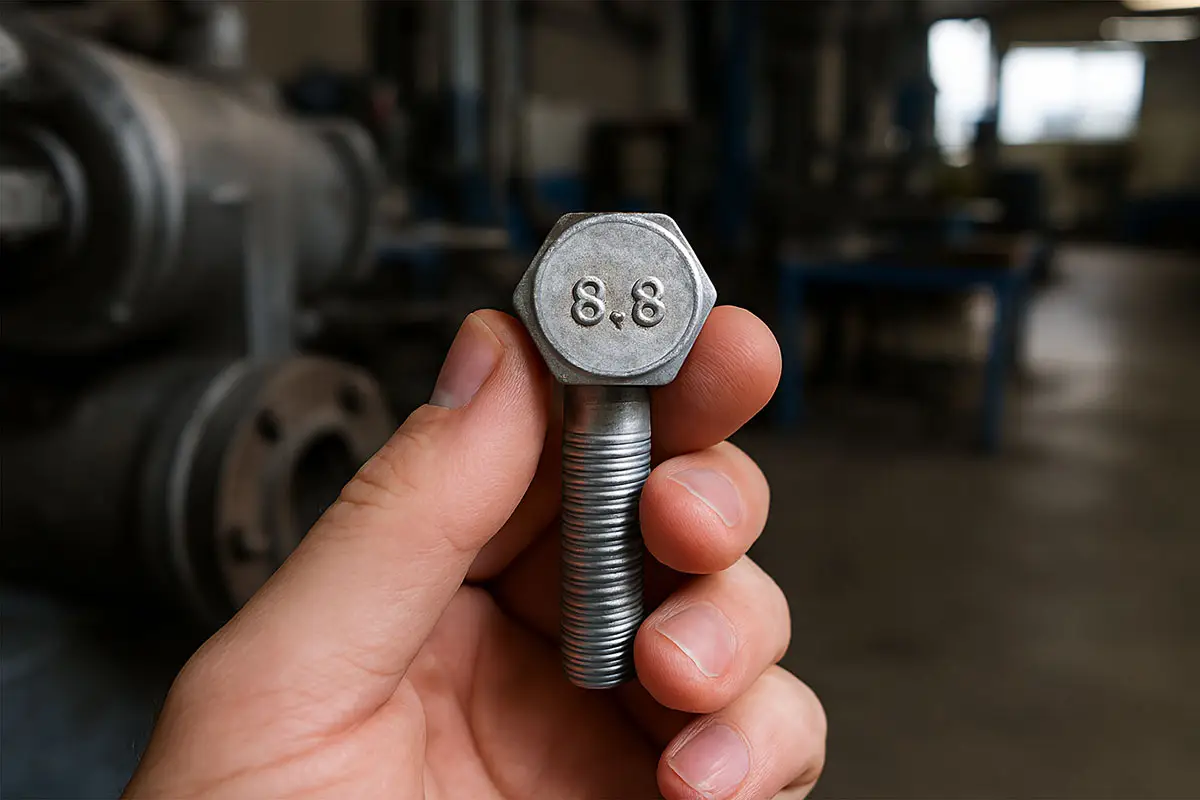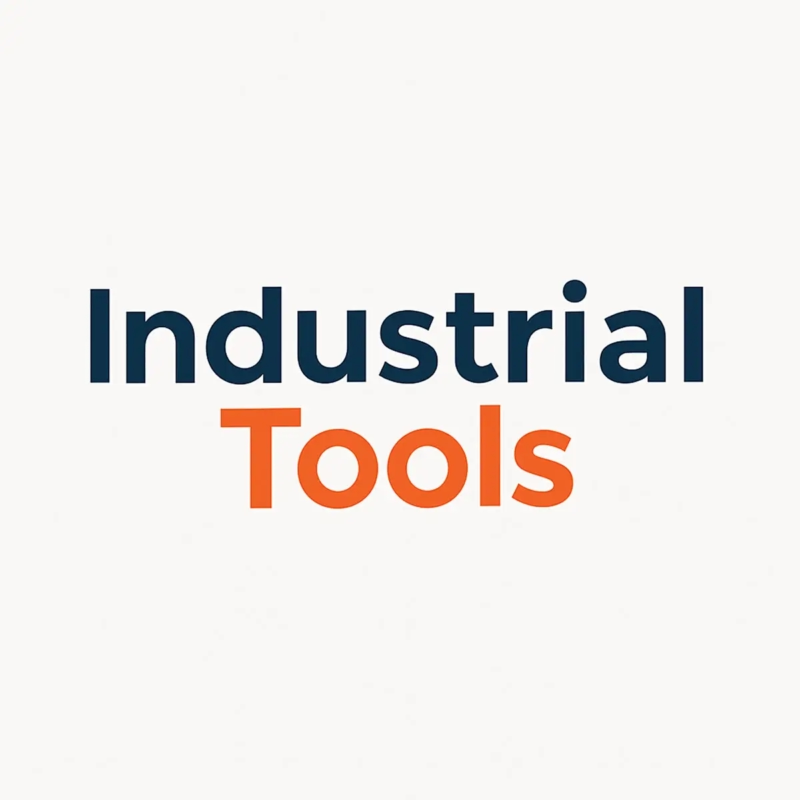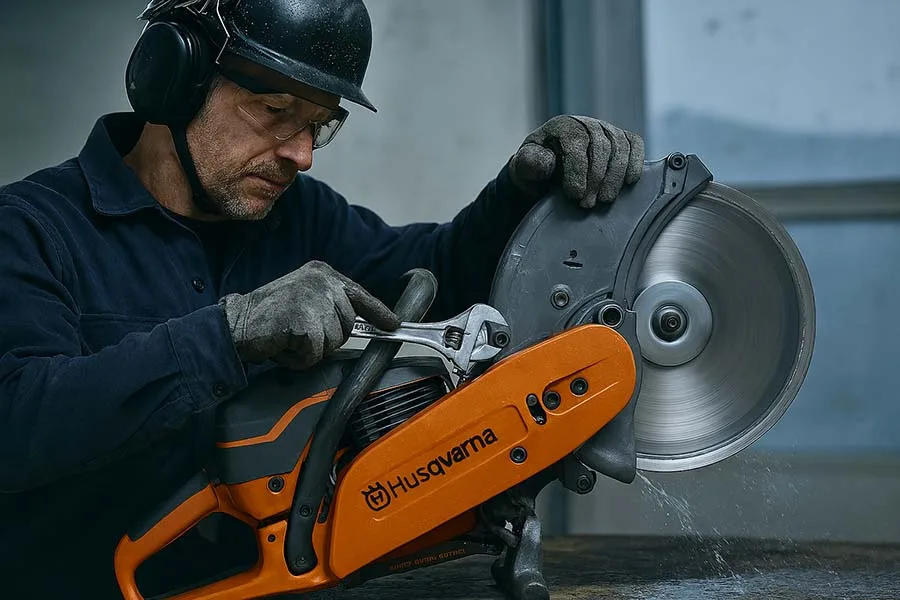Introduction: What’s Stamped Into a Bolt Says Everything
Ever looked at a bolt head and wondered what all those cryptic numbers, lines, or symbols mean? You’re not alone. Those little markings hold big secrets—like the bolt’s strength, material grade, and even where it was made. If you’re in manufacturing, maintenance, or engineering, understanding these markings is not optional—it’s essential.
In this guide, we break down bolt head markings for both SAE (imperial) and metric (ISO) standards, help you decode manufacturer symbols, and give you practical tips to identify and verify bolts in the field.
Why Are Bolt Head Markings Important?
Bolt head markings aren’t just for looks. They serve several critical functions:
- ✅ Indicate strength grade or property class
- ✅ Reveal the standard/specification (SAE, ISO, ASTM)
- ✅ Identify the manufacturer or origin
- ✅ Help ensure the correct fastener is used
- ✅ Prevent accidents caused by using the wrong bolt
SAE (Imperial) Bolt Head Markings
Grades and Strength
SAE bolts, often used in the U.S., are typically marked by radial lines.
| Grade | Markings | Tensile Strength (psi) | Common Use |
|---|---|---|---|
| Grade 2 | None (unmarked) | ~60,000 | General-purpose, non-critical |
| Grade 5 | 3 radial lines | ~120,000 | Automotive, light industrial |
| Grade 8 | 6 radial lines | ~150,000 | Heavy-duty, high-strength applications |
Tip: More lines = stronger bolt. Simple as that.
Metric Bolt Head Markings (ISO)
Metric bolts use numeric property classes, such as 8.8 or 10.9.
| Class | Marking | Tensile Strength (MPa) | Yield Strength (MPa) |
|---|---|---|---|
| 4.6 | “4.6” | 400 | 240 |
| 8.8 | “8.8” | 800 | 640 |
| 10.9 | “10.9” | 1000 | 900 |
| 12.9 | “12.9” | 1200 | 1080 |
Lesser-known fact: The first number represents 1/100 of the tensile strength in MPa. The second is the ratio of yield to tensile.
Manufacturer Identification Symbols
Many bolts also include a manufacturer’s mark, especially in regulated environments. These can include:
- Letters or logos
- Numbers representing the plant or batch
- Country of origin
Examples:
- “XY” might represent XYZ Fasteners Inc.
- “USA” indicates country of origin
- Logo or trademark symbols can identify specific suppliers
To decode these, manufacturers often publish registries. Organizations like ASTM and ISO may also maintain marking guides.
ASTM and Other Specialty Markings
For structural or critical-use bolts, you’ll often see ASTM designations, such as:
- A325 (structural bolts)
- A490 (high-strength bolts)
- F3125 (combines A325 and A490 standards)
Each carries implications for shear strength, tensile strength, and coating requirements.
How to Visually Inspect and Verify Bolt Markings
Here’s a quick checklist:
- 🧠 Count the lines or read the numbers (Grade 5 = 3 lines, 8.8 = medium carbon steel)
- 🔍 Look for logo or letters indicating the manufacturer
- 📏 Measure diameter to compare with datasheets
- ✅ Match with torque specs and design drawings
- ⚠️ Red flag: If a bolt is missing markings where they should exist, it might be counterfeit or non-standard
How to Read Bolt Head Markings FAQ
Funny Fact
Some old-school mechanics still call unmarked bolts “mystery meat.” You know it’s metal, but what’s really inside is anyone’s guess!
Lesser-Known Fact
Some counterfeit bolts have fake head markings, mimicking top manufacturers. That’s why quality assurance testing and traceability are so important in industrial supply chains.
Conclusion: The Head of the Bolt Tells the Whole Story
Don’t overlook the top of the bolt—it tells you everything from strength to manufacturer to material. Reading bolt head markings can save you from catastrophic failure, streamline maintenance, and ensure you’re meeting safety codes and engineering standards.
Coming Up in This Topic
- Understanding Bolt Grades and Strength Classes (Metric & SAE)
- Common Types of Industrial Fasteners and When to Use Them
- What’s the Difference Between Bolts, Screws, and Studs?
- Fastener Materials and Coatings Explained
- How to Prevent Fastener Failure in the Field
- How to Read Bolt Head Markings: Grade, Manufacturer & More
- Explained: Coarse vs Fine Threads in Industrial Fastening
- What’s the Difference Between Bolts, Screws, and Studs?
- Should You Buy Fasteners in Bulk or Kits?
What Do You Think?
Have you come across any strange or confusing bolt head markings? Let us know in the comments! And if you found this guide helpful, share it on social media or with your crew—because better knowledge means better builds.





